By Bill Bates and Bill Fantozzi
Trainers for California Karelians
Every breed of dog has its own characteristics, and although KBDs are a perfect match for our family, they are not right for everyone. If your lifestyle is compatible, you are properly prepared for this commitment, and you apply proper handling, you can surely find incomparable companionship from these wonderful creatures. We place our puppies with personal attention to the individual expectations of each new owner, as satisfied owners are a testament of our commitment to quality pups for quality families.
Remember, your dog breeder has had an opportunity to observe the puppies in a variety of testing scenarios. Communicating your expectations for the relationship you envision with your new Karelian and trusting your dog breeder to help in your puppy selection can help ensure a good match between puppy and new owner.
Tips for the prospective new owner:
 Know your dog breeder or get a recommendation from someone who has had a relationship with that dog breeder. Know your dog breeder or get a recommendation from someone who has had a relationship with that dog breeder.
 Learn as much as you can about the sire (the father) and bitch (the mother) of the litter. The parents' personalities and abilities can give you some insight into what the puppies may be like. Personal observation and contact during a visit to the dog breeder is a great way to learn about the parents. Learn as much as you can about the sire (the father) and bitch (the mother) of the litter. The parents' personalities and abilities can give you some insight into what the puppies may be like. Personal observation and contact during a visit to the dog breeder is a great way to learn about the parents.
 If time and circumstance permits, visit the puppies more than once before making a choice. You are looking for consistency in behavior to get an accurate assessment. If time and circumstance permits, visit the puppies more than once before making a choice. You are looking for consistency in behavior to get an accurate assessment.
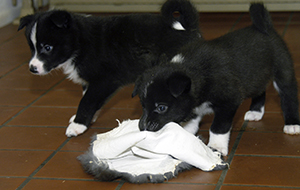
Puppy Testing
Play drive, alertness, involvement, curiosity, and the confirmation and personality of the parents are among the qualities to be considered in assessing the natural instincts and potiential of a Karelian Bear Dog puppy. You can begin testing puppies to evaluate their personalities between five and eight weeks of age. Decisions should not be made based on one observation but rather over a testing period. Puppies mature at different rates, much like humans, so the more opportunities you can create to observe the puppies, the more accurate the assessment.
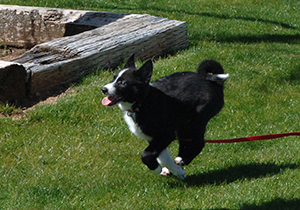
Begin by introducing the puppy to a variety of new stimuli, such as new noises, people, and toys. You are looking for the puppy's reactions. One of your tests should be conducted at an unfamiliar location. Test them separately or in pairs to reduce litter support from one another. Below, introduce them to bear scent if available. Place a small amount of scent on a rag and drag it around from the end of a fishing pole, observing the reaction. (Don't use the scent on rabbit fur unless you want to teach your dogs to hunt rabbits!) Once again, your choice of a puppy for yourself or as a recommendation to others should be based on all your observations over the entire test period.
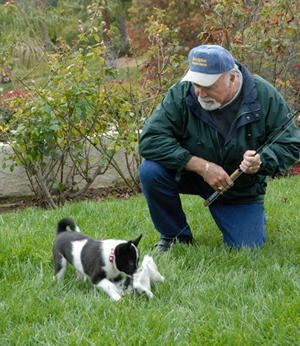
|
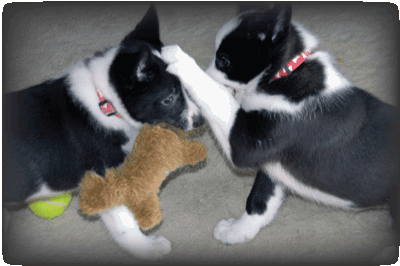
Personalities are a survival tool
There is a well-studied theory among biologists that differing personalities provide a survival benefit for a species. Just as in humans, if all individuals were timid or all bold, the species would perish.
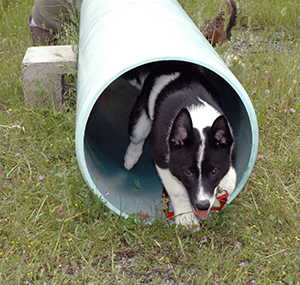
Personalities make a species adaptable to changes. When there is a shift in environmental situations, the individual who couldn't handle one well might handle the other very well. That kind of adaptability in any species helps make it successful.
|